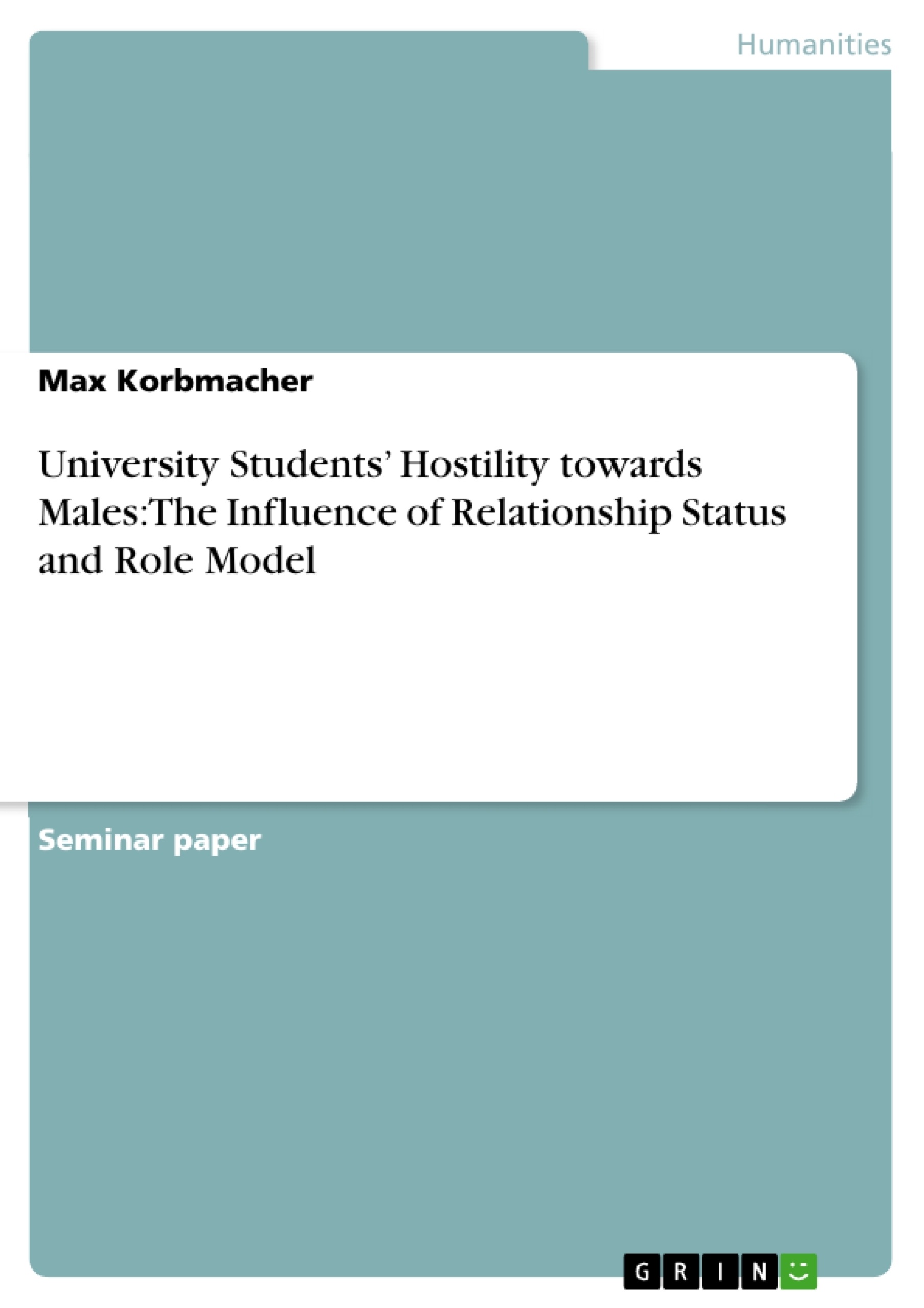The aim of this study was to examine whether the two variables relationship status and role model have an influence on hostility towards males. 81 undergraduate psychology students of the Abertay University Dundee (UK) filled out two questionnaires. The Ambivalent Sexism Inventory was used in the first questionnaire and the Ambivalence Towards Men Inventory in the second questionnaire to measure sexist attitudes.
It was predicted that participants’ relationship statuses and role models would influence their mean score on hostility towards males (HM). Results demonstrated that there was no influence of relationship status or role model on hostility towards males. It was concluded that sexism and ambivalent attitudes are influenced by a variety of factors which need further consideration in future research.
Inhaltsverzeichnis (Table of Contents)
- Abstract
- Method
- Participants
- Materials
- Procedure
- Results
- Discussion
Zielsetzung und Themenschwerpunkte (Objectives and Key Themes)
The study aimed to investigate the influence of relationship status and role model on hostility towards males. The research involved 81 undergraduate psychology students at Abertay University Dundee and examined their sexist attitudes using two questionnaires.
- The relationship between relationship status and hostility towards males
- The relationship between role model and hostility towards males
- The role of ambivalent sexism in influencing attitudes towards men
- The application of Social Identity Theory and Intergroup Contact Theory in understanding hostility towards males
Zusammenfassung der Kapitel (Chapter Summaries)
- Abstract: The study aimed to investigate the influence of relationship status and role model on hostility towards males. Participants were 81 undergraduate psychology students at Abertay University Dundee, and their sexist attitudes were measured using two questionnaires.
- Method:
- Participants: The study involved a convenience sample of 81 second-year psychology students. All students in the Social Psychology course in the Spring Semester 2017 were invited to participate.
- Materials: Two online questionnaires were used, employing the Ambivalent Sexism Inventory (ASI) and the Ambivalence Towards Men Inventory (AMI) to measure sexist attitudes.
- Procedure: Participants were asked to complete two online questionnaires measuring their attitudes towards females and males. The questionnaires were available online and had to be completed independently.
- Results: The study found no significant influence of relationship status or role model on hostility towards males. Participants in relationships were slightly more hostile towards males than those who were single, but the difference was not statistically significant. Participants with a male role model and those with no role model scored the highest on hostility towards males, while participants with a female role model scored lower and the mixed (male and female) role model scored the lowest.
Schlüsselwörter (Keywords)
The study focuses on the following key themes: relationship status, role model, hostility towards males, ambivalent sexism, Social Identity Theory, Intergroup Contact Theory, gender ideologies, and traditional gender roles.
- Quote paper
- Max Korbmacher (Author), 2017, University Students’ Hostility towards Males: The Influence of Relationship Status and Role Model, Munich, GRIN Verlag, https://www.grin.com/document/370660



